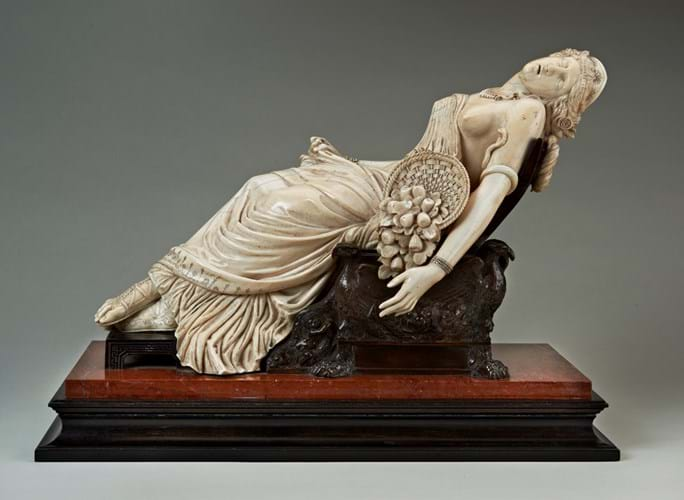
It will cost £20 to register an exempt item on a database and £230 to certify that an object has been deemed of ‘outstandingly high artistic, cultural or historical value’.
The charges are among the salient points of a 24-question consultation launched by the Department for Environment, Food and Rural Affairs (Defra) on March 9. Running for eight weeks, it seeks the public’s views on how the trade in some antique items containing elephant ivory will work in practice.
It is believed once this period is over the government will move quickly to bring the act into force. To submit feedback to the consultation, which closes on May 4, visit https://atg.news/DefraIvory
A keystone of Defra’s plan is the creation of a database for ivory items that are exempt under the act and will require registration. These are objects made prior to 1947 that comprise less than 10% ivory by volume (the so-called de minimus rule), pre-1975 musical instruments comprising less than 20% ivory and pre-1918 portrait miniatures. The fee for this will be £20 per item or £50 for a group of objects (up to a maximum of 20).
There is no requirement to register an item if the owner does not plan to sell. However, these fees will apply every time an item is sold.
A ‘set’ of objects, for example a tea set with ivory insulators or a drawing instruments set including ivory elements, will be considered a single item and can be registered as such.
Applying to sell an antique (pre 1918) on the grounds it is of ‘outstandingly high artistic, cultural or historical value’ will be more burdensome and subject to a fee of £250, comprised of £20 for registration and £230 to cover the cost of expert advice provided by a committee.
Thirteen institutions familiar with handling ivory works of art have been suggested, all of them public museums rather than dealerships or connoisseurs.
Narrow exemption
Defra says this exemption is ‘designed to be narrow’ and will be subject to criteria relating to rarity and ‘the extent to which the item is an important example of its type’.
Applicants will need to argue why they believe that the item qualifies. Factors such as artistic or aesthetic quality, craftsmanship, condition, provenance and historical significance will be taken into account.
In the event of a refusal, the act allows the owner a right to reapply or appeal.
Once an object is deemed to be of ‘outstandingly high artistic, cultural or historical value’ the certificate will operate like a passport and remains valid when ownership of the item is transferred.
The government is also planning to extend the act to cover other ivory-bearing species such as narwhals, orcas and hippos. Defra is considering previously submitted evidence and will be consulting on this later in the year.
The art and antiques trade associations are working on their responses to Defra’s consultation.
Fionnuala Rogers, a consultant lawyer in the art and cultural property group within law firm Constantine Cannon, said: “While not unexpected, it is frustrating that the proposed guidance acknowledges that the antiques trade may be considered suitable experts to verify the age of an object for de minimis, musical instruments and portrait miniatures exemptions, but does not consider their expertise sufficient to assess whether an object is rare and important.
“It is also disappointing to see that Defra continues to rely on the 2018 Impact Assessment which was scrutinised as part of the legal challenge to the Ivory Act, with the High Court stating that ‘the impact on dealers and collectors was considerably underestimated’.”
The Ivory Act 2018 exemptions to the UK ban in trading ivory are:
Items with only a small amount of ivory. Such items must comprise less than 10% ivory by volume and have been made prior to 1947.
Musical instruments. These must have an ivory content of less than 20% by volume and have been made prior to 1975.
Portrait miniatures. A specific exemption for portrait miniatures – often painted on thin slivers of ivory – made before 1918 and with a surface area of no more than 320cm sq.
Sales to and hire agreements with qualifying museums.
The rarest and most important items of their type. These must be items of outstanding artistic, cultural or historic value, and made prior to 1918. Decisions on applications for such items will be based on expert advice from a selection of institutions deemed to have the necessary knowledge and expertise.
In the EU, plans for a ban on the import and export of antique ivory are under way. For the views of the European Federation of Auctioneers, see Letters.















